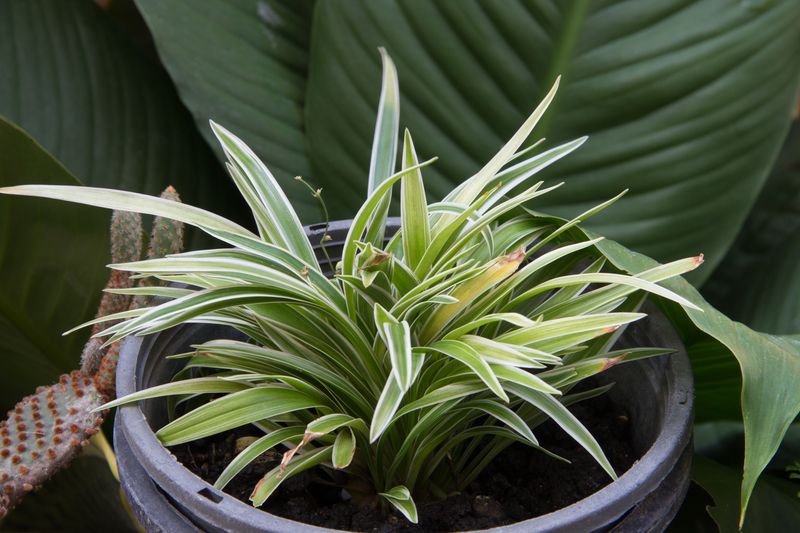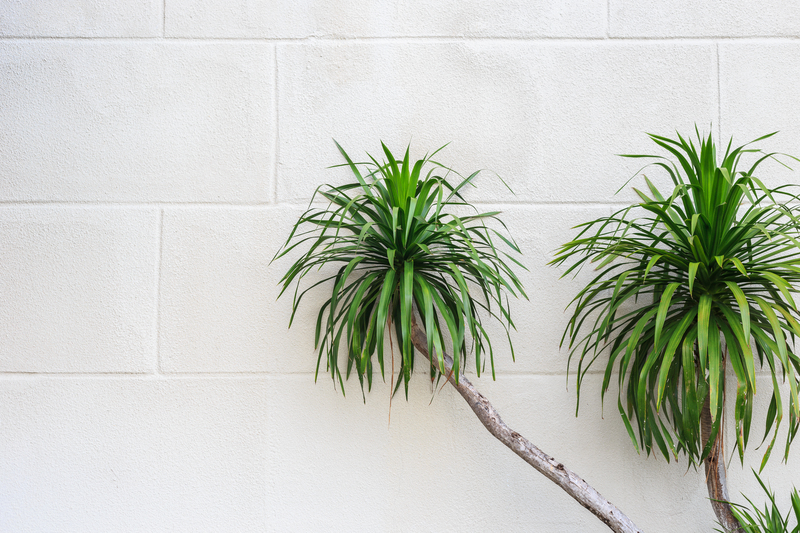Transform Your Space: 5 Easy Low Maintenance Garden Tips
Are you dreaming of a lush green oasis but worry about the time and effort required to maintain it? You're not alone! Many homeowners yearn for vibrant gardens that are easy to care for and add beauty to their outdoor space. With the right strategies, you can create a stunning, low-effort garden retreat that transforms your space. In this in-depth guide, discover five easy low maintenance garden tips designed to help you enjoy more beauty with less work. Let's dig in!
Why Choose a Low Maintenance Garden?
A low maintenance garden design offers more than just convenience--it brings long-lasting value. Here's why so many choose this practical landscaping approach:
- Time-Saving: Less weeding, watering, and pruning means you get to enjoy your garden without constant upkeep.
- Cost-Effective: Reduce expenses on water, fertilizers, and garden services.
- Sustainable: Native and drought-resistant plantings benefit local ecosystems and reduce waste.
- Consistently Beautiful: Low maintenance does not mean bland--a thoughtfully planted garden flourishes with minimal attention.
- Stress-Reducing: Escape the chores and simply relax in your revitalized outdoor space.

1. Select the Right Plants for Effortless Beauty
The Power of Plant Choice in Low Maintenance Gardens
Arguably, the easiest way to create a low maintenance garden is by using plants that naturally thrive in your region's climate and soil. These "right plants" won't require excessive watering, fertilizing, or pest control, making them the backbone of effortless gardening.
Go for Native and Drought-Resistant Varieties
- Native Plants: Species home to your region adapt better to local conditions, needing less specialized care and providing habitats for beneficial insects.
- Drought-Tolerant Choices: Options like lavender, sedum, Russian sage, or ornamental grasses look great while needing less water.
- Evergreens: These offer year-round structure and greenery without leaf drop mess every fall.
Pro Tip: Plant in masses or large groupings for visual impact and fewer maintenance headaches.
Popular Low-Effort Plant Options
- Lamb's Ear (Stachys byzantina)
- Black-eyed Susan (Rudbeckia)
- Hostas (partial shade)
- Daylilies (Hemerocallis)
2. Minimize Lawn Areas for Less Work
Reduce Turf & Embrace Alternatives
Lawns can be labor-intensive, demanding mowing, edging, watering, and weed control--far from a low maintenance solution. By minimizing grass in your landscape, you free up time and cut down on yard chores.
Low Maintenance Lawn Alternatives
- Groundcovers: Try creeping thyme, vinca minor, or clover for a green look without the weekly mowing.
- Gravel or Mulch Pathways: These replace lawn in tough spots and suppress weeds.
- Paving and Decking: Use attractive patios or composite decking to create social areas with minimal upkeep.
- Artificial Turf: A hassle-free, evergreen look without the water bills or mowing.
Transform your space by turning seldom-used lawns into lush, easy-care beds or stylish hardscaping!
3. Mulch for Moisture and Weed Control
How Mulching Simplifies Garden Care
Want fewer weeds and less watering? Mulching is a game-changing low maintenance hack for gardeners! Spreading a 2-4 inch layer of organic mulch (like shredded bark or compost) creates a barrier that does double duty:
- Suppresses Weeds: Mulch blocks sunlight, preventing weed seeds from germinating and sprouting up.
- Retains Moisture: Less evaporation means your plants require less frequent watering--even during summer.
- Improves Soil: Organic mulches break down over time, enriching the soil naturally.
- Regulates Temperature: Insulates roots from extreme heat or cold.
Pro Mulching Tips:
- Avoid piling mulch against plant stems or trunks (this can cause rot).
- Replenish mulch layers each spring to keep them effective.
- Use stone or gravel mulches in very dry areas for added permanence.
Embrace mulched beds and spend more time enjoying your garden, not pulling weeds!
4. Embrace Smart Irrigation for Water-Wise Gardens
Automate and Save with Efficient Watering Systems
Watering can be one of the most time-consuming garden chores. A smart, efficient irrigation system reduces manual work and waste, which is essential for easy-care gardens.
Easy, Low-Maintenance Watering Methods
- Drip Irrigation: Delivers water exactly where it's needed, conserving water and preventing disease from wet foliage.
- Soaker Hoses: These "weeping" hoses evenly moisten the root area with zero fuss.
- Automatic Timers: Attach to any hose or irrigation system and let technology do the remembering for you.
- Rain Barrels: Capture free rainwater and connect to soaker hoses for sustainable irrigation.
Extra Tips for Water-Wise Gardening:
- Water early in the morning to reduce evaporation.
- Group plants with similar water needs together for efficient irrigation.
- Check for leaks or clogs in your system once a season.
*Smart irrigation* not only cuts down on garden chores but also helps the environment and your water bill!
5. Design Thoughtful Paths & Simple Structures
Paths, Edging, and Seating for a Cohesive, Carefree Space
Low maintenance doesn't mean low style! Well-planned paths, hardscape, and focal features can make your garden functional, beautiful, and simple to care for.
- Paths: Use natural stone, pavers, or gravel to create walkways that cut down foot traffic on beds.
- Garden Edging: Edging (stone, steel, wood) keeps lawns and beds tidy and reduces weeding at borders.
- Seating Areas: Install a bench, small deck, or patio to create instant outdoor "rooms" perfect for relaxing or entertaining.
- Low Maintenance Structures: Pergolas, arbors, and raised beds add dimension without complex upkeep.
Designing your garden layout for ease-of-use can be as important as choosing the right plants. Pathways allow easy access for pruning and harvesting, while seating invites you to enjoy your garden's beauty without breaking a sweat.

Bonus: Maintenance Hacks for Effortless Outdoor Living
- Choose Quality Tools: Invest in ergonomic, long-lasting hand tools that simplify tasks and reduce work time.
- Opt for Perennials: Unlike annuals, perennials come back year after year--less planting, more enjoyment!
- Fertilize Smartly: Slow-release and organic fertilizers only need to be applied a couple of times per year.
- Prune Sparingly: Let plants develop their natural shape, only trimming back when necessary for size or health.
*Remember*, the goal is an easy-to-maintain garden that fits your lifestyle--so tailor these tips to your needs!
Conclusion: Enjoy Your Easy-Care Garden Paradise
Whether your yard is spacious or compact, these low-maintenance gardening tips will help you create a thriving outdoor haven with less effort and more enjoyment. By choosing the right plants, reducing lawn, mulching, using smart irrigation systems, and integrating thoughtful design features, your outdoor space will transform into a place of rest and beauty.
Are you ready to transform your space? Start with one or two tips this season, and soon you'll have a gorgeous garden that practically takes care of itself. Embrace low maintenance landscaping, reclaim your weekends, and fall in love with outdoor living--without the hassle!
Frequently Asked Questions about Low Maintenance Garden Design
- What is the best low-maintenance alternative to grass?
Groundcovers like clover, thyme, or creeping Jenny are popular alternatives. Gravel, mulch, or spacious patios are also great for transforming lawn areas into easy-care zones. - How do I choose the right plants for my climate?
Consult your local extension service or a plant nursery. Seek out native species, or search online for plants that thrive in your USDA hardiness zone. - How often should I mulch my garden beds?
Once a year, typically in spring. Replenish mulch as it breaks down or gets disturbed over time. - Will a low maintenance garden sacrifice color and variety?
No! Many easy-care plants are incredibly colorful and diverse. Strategic planting and smart design can yield plenty of year-round interest with minimal upkeep.
For more creative ideas and tips to transform your garden space, follow our blog and subscribe to our newsletter!


